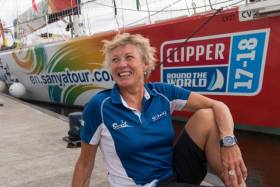Displaying items by tag: Nikki Henderson
Clipper Race founder Sir Robin Knox-Johnston has described as “unfortunate” the lack of a female skipper in the upcoming 2019-20 edition of the round-the-world yacht race.
But he also expressed his hope that the gender imbalance will be corrected in future editions of the race as more and more women secure the necessary qualifications to lead a team.
In a letter to EuroSail News, Sir Robin spoke highly of the performance of Wendy Tuck and Nikki Henderson in the most recent race.
Australian skipper Tuck made history last July as the first woman to ever win a round-the-world yacht race, while Henderson recently scooped the YJA Yachtsman of the Year Award for being the youngest ever skipper in the race.
“We have had five female skippers over the years and all have been excellent without exception,” he said. “I would happily take on more provided they had the experience and ability but we did not receive any applications from suitable candidates this time around.”
Noting that 30% of Clipper Race crews — a mixture of experienced and novice sailors — are now women, Sir Robin expressed his hope that the balance will be “corrected in time”.
He also specifically referred to “courses at the Hamble School of Yachting and our new Mate position within the Clipper Race [through which] we hope to be able to encourage more women to take their sailing career to the next level”.
The 11 skippers, all men, who will lead teams out of the UK for the near year-long voyage of the Clipper 2019-20 Race were announced last week, as previously reported on Afloat.ie.























